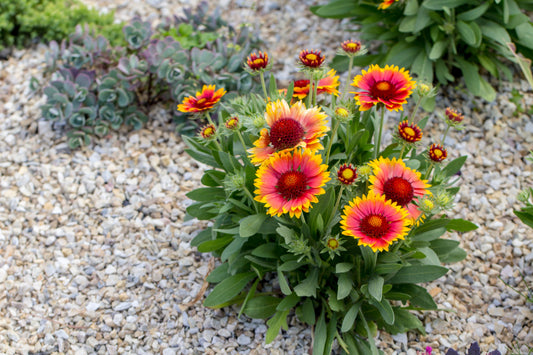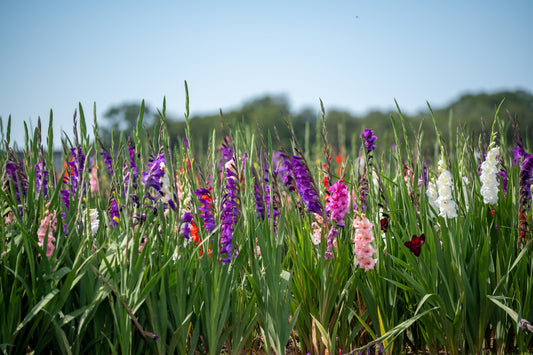Allium Planting & Growing Guide
Planting Guide Information
-
Species dependent; 4-8"Planting Depth
-
6-8" ApartPlanting Proximity
-
Fall or SpringPlanting Season
-
Attracts pollinators. Drought tolerant.Plant Benefits
-
Moderate to LowWater Quantity
-
Late Spring - SummerBloom Season
-
Full SunSunlight Quantity
-
Species DependentHardiness Zones
Additional Growing Information
Where to Plant
Alliums thrive in locations with rich, well-drained soil and full sun but will tolerate partial shade. If you notice water puddles 5–6 hours after a hard rain, you'll want to find another site or amend the soil with the addition of organic material to improve drainage. Alliums aren't fussy about soil, but they will not survive in soggy conditions or standing water. If using containers, make sure there are adequate drainage holes and keep in mind the mature size of the varieties you have chosen to plan your container sizes accordingly.
When to Plant
Allium bulbs are typically planted when dormant in the fall. While they are remarkably resilient in a dormant state and will tolerate waiting, they should be planted a few weeks before the ground freezes. After planting, their roots will form, and you can expect blooms to arrive in late spring or early summer.
How to Plant
- Find a location where your Alliums will receive full sun, as they develop stronger stems in brighter light.
- Fill containers, if you're using them, with good quality, well-drained soil. Almost any commercially available potting medium will do the trick.
- Dig holes and bury the bulbs 4–8" deep and 6"–8" apart with the pointy end facing up.
- Water thoroughly after planting to settle the soil around the bulbs.
How to Grow
- Water as needed during active growth, aiming for about 1" of moisture per week.
- Stake taller Alliums to avoid breakage. Shorter varieties don’t require staking.
- Leave the foliage in place after blooms have faded. The leaves will gather sunlight to create food through photosynthesis, strengthening the bulb for the future.
- Remove the foliage in mid-summer when the leaves turn yellow and die back as the plant slips into dormancy. This clean-up will give your Allium a clean slate before beginning the next growing cycle.
Allium Tips & Tricks
- Snip a few of these brilliant blooms during the growth period for striking arrangements or for drying. Don’t worry—this won’t hurt your plants!
- Expect the most substantial top growth and flower stems to arrive in the spring. Those in warmer climates may also develop a few sprouts in autumn.
- Amend soil with compost, ground bark, or decomposed manure as needed to avoid water-logging your plant.
- Plant a clump of Allium bulbs for magnificent clusters of blooms rather than a stand-alone display.
From the Family
-
 50% Off
50% OffAllium - Ocean Magic Mix
60 Allium BulbsRegular price $22.49Sale price $22.49 Regular priceUnit price per$44.9550% Off -
 50% Off
50% OffAllium - Playful Party Mix
60 Allium BulbsRegular price $14.99Sale price $14.99 Regular priceUnit price per$29.9550% Off -
 50% Off
50% OffAllium - Summer Sparkler Mix
60 Allium BulbsRegular price $22.49Sale price $22.49 Regular priceUnit price per$44.9550% Off -
Allium - Neapolitanum Naples Garlic
20 Allium BulbsRegular price $4.98Sale price $4.98 Regular priceUnit price per$9.9550% Off -
Allium - Azureum Blue of the Heavens
20 Allium BulbsRegular price $7.48Sale price $7.48 Regular priceUnit price per$14.9550% Off








